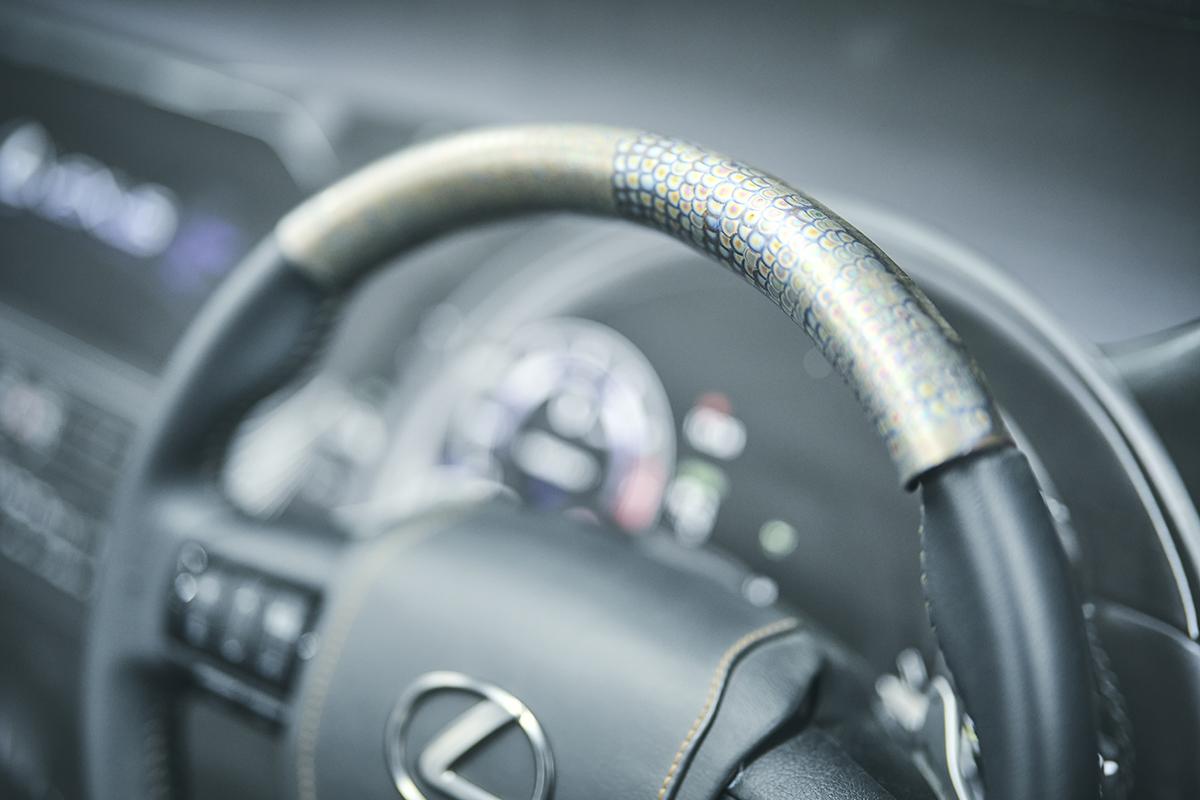
This is part two of a report on the Takumi Kobo, which harnesses the sheet metal craftsmanship and monozukuri spirit passed down since Toyota's founding.
Here, we take a closer look at the team's aspirations and the monozukuri genba, the place where things are made.

Handwork still plays an important role in today’s car manufacturing, and it continues to evolve even as technologies such as AI and 3D printing offer more advanced methods.
This series features the craftsmanship of Japanese monozukuri (making things) through interviews with Toyota’s carmaking masters.
This special installment shines the spotlight on the Takumi Kobo, which seeks to create fascinating cars and accessories by harnessing the sheet metal craftsmanship and monozukuri spirit passed down through the generations since Toyota’s founding.
In the second part, we report on the team’s aspirations and the monozukuri genba, focusing on the Century scuff plate's journey toward becoming a product.
A spirited team striving to create new value
As mentioned in our previous article, the new Century’s optional Takumi scuff plate, called Masame, was created by the Takumi Kobo, a team of artisans established in April 2022.

To achieve this elegant woodgrain-inspired finish, sheet metal takumi (artisans) hammer the design onto stainless steel plates, line by line.
The scuff plate’s planning and development was led by Yuto Tanaka, a Project Manager at the Technical Development & Prototype Division’s Strategy and Planning Group, who was also involved in establishing the Takumi Kobo. His team consisted of Yuko Murata, a technician who coordinates all aspects of manufacturing with partners inside and outside Toyota; Hitoshi Tsuchiya, a sheet metal master who had helped Tanaka launch the Takumi Kobo; and two of Tsuchiya’s junior colleagues, Yoshiki Horikawa and Jun Nitahara.

As a student, Murata researched aluminum, carbon fiber, and other composites through to the graduate level, then joined a chemical manufacturer to work on developing materials. However, the desire to be involved in end products eventually won out, and Murata moved to Toyota in 2019 at the age of 30. Together with other current members, she has been working in product development since 2021, a year before the Takumi Kobo was set up.
Meanwhile, Horikawa joined Toyota in 2004, straight out of high school. Since then, he has spent the past two decades honing his metalworking skills at the Prototype Body Production Section.

In fact, Horikawa has been harnessing his sheet metal skills to help develop products for around seven years, working under the Prototype Body Production Section’s leader, Eisuke Yoshino (showcased in the fourth article of this series).
Some of the fruits of these efforts, including a prototype Lexus LS steering wheel and gear stick covers, are on display in the Takumi Kobo workshop.
While these items never became products—partly due to the safety issues of mounting metal components in car interiors—such richly creative pieces can be seen as a cornerstone of the Takumi Kobo.



Jun Nitahara joined Toyota in 2015 upon graduating from a technical high school in his home prefecture of Fukuoka. Though still only 27, he is brimming with creativity and dedicated to refining his skills. Nitahara spent the first three years developing his sheet metal skills in the Prototype Body Production Section, followed by four years assembling car bodies on the production line, before returning in 2022 to become a Takumi Kobo member.


